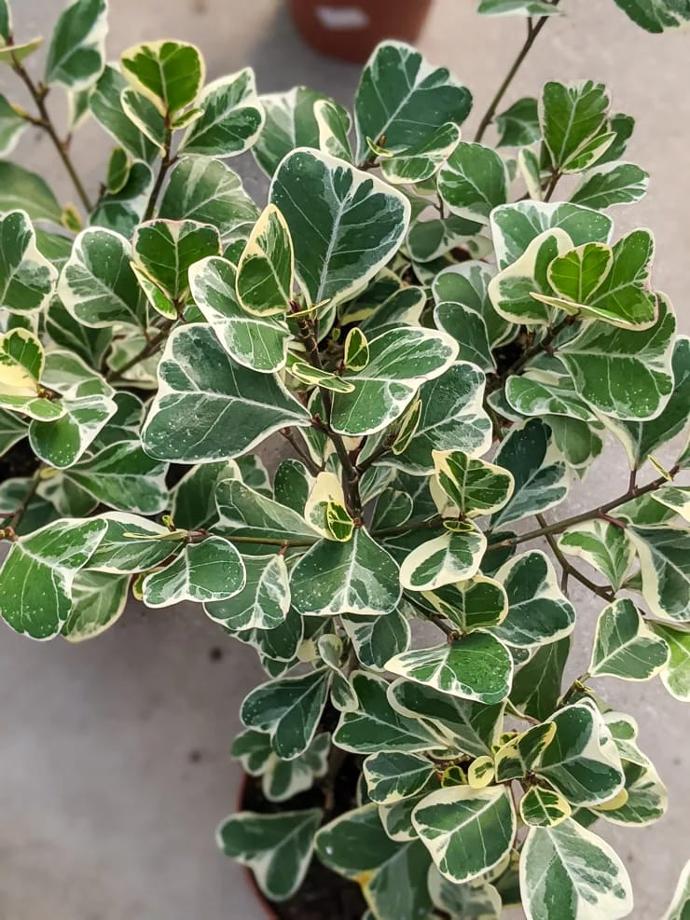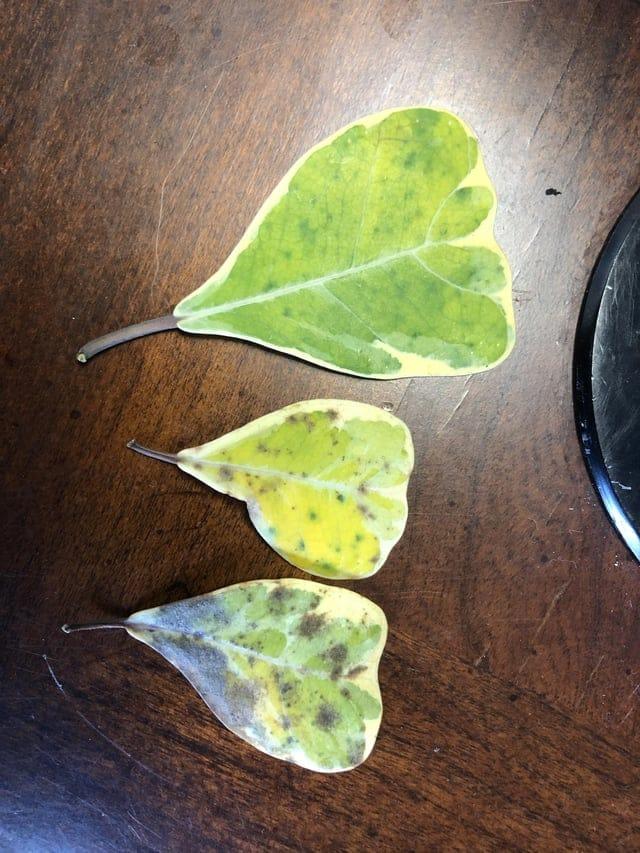Triangular Ficus Plant
Triangular Ficus, possibly referring to a specific Ficus variety, may have varying care requirements. Generally, provide well-draining soil, appropriate sunlight, and regular watering. Pruning and fertilizing practices may vary based on the specific characteristics of this plant.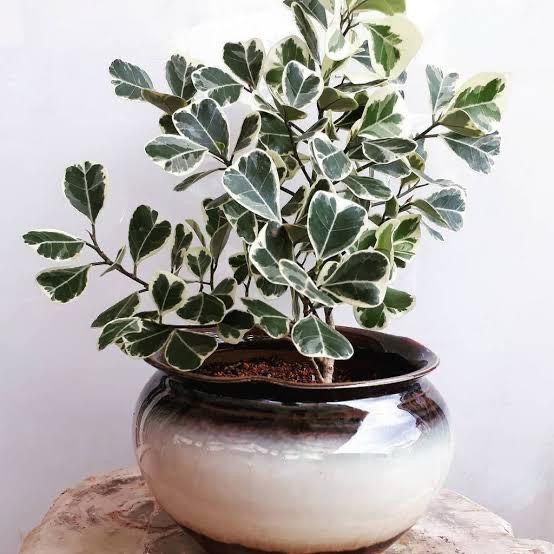
Habit
Fern
Height
2 to 3 m
Growth
Moderate
Soil
Well-drained, Loamy
Shade
Partial shade to Full Sun
Moisture
moist to wet
Edible
No
Medicinal
No
Origin
Africa
Climatic Condition
Tropical, Subtropical
Temperature (°)
25°C to 35°C
Humidity (%)
60% to 80%
Potting media
50% Loam, 40% Sand, 10% Organic Matter
Fertilizers
Organic Fertilizer
Watering
Regular watering
Plant Weight
2 to 5 kg
Flowering Time
Spring to Summer
Soil Ph level
6.0 to 7.0
Water Ph level
6.0 to 7.0
Soil EC
0.5 to 0.8 mS/cm
Yield Per Plant
10 to 15 kg per plant
NPK ratio
10 to 15 kg per plant
life Span
10 to 20 years
Health Benefits
Ornamental, Air-purifying
Suggested Grow Media or Potting Mix ?
40% peat moss, 30% compost, 30% perlite
Suggested Fertigation/Fertilizers
Fertilize every 2 weeks with a balanced, water-soluble fertilizer.
Common Diseases and Remedies
Branch Dieback, bacterial leaf spot
Leaves will begin to wilt, brown and die off. After this the branches will begin to die and turn black.
Remove the plant from the pot and trim any diseased roots .
HEALTH BENEFITS
1. May help reduce inflammation: Triangular ficus's antioxidants and other compounds may help reduce inflammation and improve overall health.
2. May have antimicrobial properties: Triangular ficus may have antimicrobial properties that can help prevent infections.
3. May help improve skin health: Triangular ficus's antioxidants and other compounds may also help improve skin health.
What is the triangular ficus plant?
The triangular ficus, scientifically known as Ficus triangularis, is a unique and attractive plant with triangular leaves. It is a plant belonging to the fig family (Moraceae) that is native to the tropics. It is also commonly known as triangular fig or triangular fig.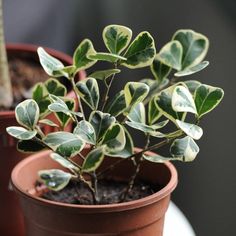
What types of triangular fig plants are there?
There are several species of Ficus plants with triangular leaves, or commonly called "triangles," but all have the correct scientific name Ficus triangalis. It does not mean that it has. Popular species include:
1. *Ficus Triangle*:
This is the most common plant known as Triangular Ficus and is known for its distinctive triangular leaves.
2. *Ficus deltoidea*:
Also called mistletoe fig, this plant has leaves that are triangular to delta-shaped (triangle-like with rounded corners).
3. *Ficus triangularis variegata*:
A variegated variety of triangular ficus with leaves that are a mixture of green and white.
4. *Ficus pandurata*:
This plant, known as violin leaf fig, has large violin-shaped leaves that are often described as triangular or triangular-ovate.
5. *Ficus elastica "Tineke"*:
This variety of rubber plants is not triangular, but has variegated leaves and a triangular base, giving it a unique appearance.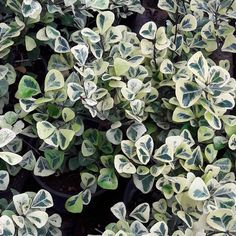
How to care for triangular figs?
Location
The triangular fig plant, Ficus triangularis, grows best in bright, indirect light. It should be placed near a window with plenty of natural light. However, avoid direct sunlight as it may cause leaf burn. In terms of temperature, triangular ficus prefers a warm and humid environment, ideally between 18 and 24 degrees Celsius. It is important to protect the plant from drafts and sudden temperature changes.
Sunshine
Triangular Ficus plants, like other Ficus varieties, grow in bright, indirect light. It should be placed in a location with plenty of natural light, such as near a window with sheer curtains or in a room with bright, filtered sunlight. Avoid direct sunlight as it may cause leaf burn.
Soil
Triangular Ficus plants, like other Ficus varieties, prefer well-drained soils that are rich in organic matter. A suitable potting mix for this plant can be made by combining equal parts peat moss, perlite, and regular potting soil. This mixture provides good drainage while retaining the moisture and nutrients your plants need.
Hydration
Triangular Ficus plants, like other Ficus varieties, require regular watering to thrive. However, it is important not to overwater, as overwatering can cause root rot.Water the plant when the top of the soil feels dry. Check the moisture level by sticking your finger into the soil. If the soil feels dry, give the plant plenty of water so that the water drains out of the drainage holes at the bottom of the pot. Dump any excess water that collects in the saucer at the bottom of the pot to prevent the roots from getting stuck in the water.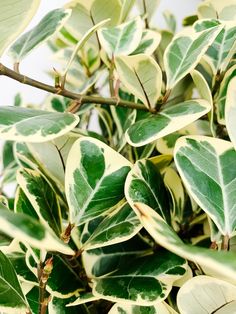
Nourishment
To nourish your triangular ficus plant and support its growth, you can feed it with a balanced fertilizer during the growing season (spring and summer). Dilute liquid fertilizer in half and feed once every 2 to 4 weeks.
Issues
*Pests:* Triangular Ficus plants may be susceptible to pests such as spider mites, mealybugs, and scale insects. Inspect your plants regularly for signs of pests, such as cobwebs, sticky residue, and small insects, and take appropriate action if necessary.
*Diseases:* Triangular Ficus plants may be susceptible to fungal diseases such as leaf spot and root rot. To prevent these diseases, avoid overwatering, provide sufficient air circulation around the plant, and remove infected leaves and branches immediately.
What are the benefits of the Triangular Ficus plant?
The Triangular Ficus plant, like other ornamental plants, offers several aesthetic and practical benefits.
1. *Air purification:* Like many houseplants, triangular ficus helps improve indoor air quality by removing toxins such as formaldehyde and benzene from the air
2. *Aesthetic Appeal:* With its unique triangular leaves and attractive foliage, the triangular ficus adds elegance and beauty to any interior space.
3. *Stress Reduction:* Research shows that caring for houseplants reduces stress and anxiety, making them a great addition to your home or office environment.
4. *Water Regulation:* Plants release moisture into the air through a process called transpiration, which helps regulate indoor humidity.
5. *Connection with Nature:* Incorporating plants into your home creates a sense of connection to nature, which can have a positive impact on your mental health and well-being.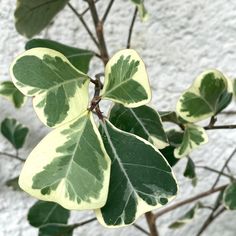
Frequently asked questions about growing Triangular Ficus plants?
How do I care for Triangular Ficus plants?
Follow these guidelines to care for your Triangular Ficus plants and keep them healthy :
1. *Light:* Place the plant in a location that receives bright, indirect light. Avoid direct sunlight as it may cause leaf burn.
2. *Water:* Water the plant when the top 1 inch of soil feels dry. Make sure the pot has sufficient drainage to avoid water clogging.
3. *Humidity:* Maintain moderate humidity around the plant. You can increase humidity by misting the leaves or placing a humidifier nearby.
4. *Temperature:* Keep the plants in a warm environment, ideally between 18 and 24°C. Protects from drafts and sudden temperature changes.
5. *Fertilizing:* During the growing season (spring to summer), feed once every 2 to 4 weeks with a balanced liquid fertilizer diluted to half concentration.
6. *Pruning:* Prune your plants regularly to remove dead or yellowed leaves and encourage more luxuriant growth. Use clean, sharp shears or pruning shears.
7. *Repotting: * Repot every 2-3 years or when it outgrows its current pot. Use a slightly larger pot with good drainage.
8. *Pests and Diseases:* Monitor plants for signs of pests such as spider mites, mealybugs, and scale insects and treat immediately. Also keep an eye out for signs of disease, such as leaf spots and root rot.
What is the Triangular Ficus plant used for?
The Triangular Ficus plant, like other Ficus varieties, is grown primarily as an ornamental plant for its attractive foliage. However, it has no significant uses beyond its decorative appeal. Some believe that certain ficus plants, including triangular ficus, have air-purifying properties and can contribute to a healthier indoor environment. Additionally, caring for houseplants like triangular ficus can have positive effects on your mental health, including reducing stress and anxiety. Even if the triangular fig has no special practical use, it can provide aesthetic and psychological benefits to those who grow it.
Can I grow triangular fig plants indoors?
Yes, you can grow triangular fig plants indoors. In fact, it can be grown indoors with the right conditions. Place it in a place that receives bright indirect light and avoid direct sunlight that can cause leaf burn. Provide a warm, humid environment, ideally between 18 and 24°C, and protect the plants from drafts and sudden temperature changes. Water the plant when the top of the soil feels dry and feed it with a balanced liquid fertilizer diluted to half strength during the growing season (spring and summer). With proper care, triangular ficus plants can grow indoors and add beauty to your home or office.
Which pot is best for growing a triangular fig plant?
To grow a triangular fig plant, choose a pot that is slightly larger than its current pot and has holes in the bottom for drainage. Pots should be made of a material that allows air circulation to the roots, such as terracotta or ceramic. These materials also help prevent overwatering by evaporating excess moisture.
Avoid pots that are too large as they can cause soil flooding and root rot. Instead, choose a pot that fits snugly around the plant's roots and leaves about 1 to 2 inches of space on the sides for growth.
Also consider the aesthetics of the pot and how it complements the overall look of your plants and interior design. Decorative pots can emphasize the beauty of triangular ficus plants and enrich the atmosphere of indoor spaces.
Where can I grow triangular ficus plants?
Triangular ficus plants can be grown by seed or by cuttings, but cuttings are more commonly used as they provide faster and more reliable results. How to grow triangular figs from cuttings:
1. *Choose Healthy Plants:* Choose healthy triangular fig plants that are strong and actively growing. Identify a stem that has at least two nodes (where the leaves appear) and is about 10 to 15 cm long.
2. *Make the cut:* Using clean, sharp scissors or pruning shears, cut the stem just below the node at a 45-degree angle. Remove all leaves from the bottom half of the cutting.
3. *Preparing the cuttings:* Dip the cut end of the cutting in rooting hormone (optional) to encourage root growth. Place the cutting in a glass of water, making sure the nodes are submerged.
4. *Rooting:* Place the jar in a warm, bright place, but avoid direct sunlight. Change the water every few days to keep it fresh.
5. *Transplanting:* Once roots have developed (usually within a few weeks), transplant the cuttings into small pots filled with well-drained potting soil. Keep the soil moist but not soggy, and place the pot in a warm, bright place.
6 *Care:* As the plant grows, continue to care for it with regular water, light, and occasional fertilizer.
.
